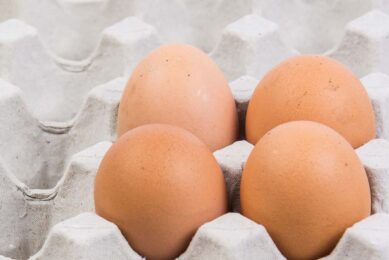Selected hens give new insights on genetic variation
Studies of heavy, fast-growing hens and small, slow-growing hens provide important new knowledge on the origin of the genetic variation that has enabled them to adapt rapidly to new extreme environments.
The findings, reported in the online journal PLoS Genetics, were made by researchers from the Swedish University of Agricultural Sciences, Uppsala University in Sweden and Virginia Polytechnic Institute and State University (Virginia Tech) in the US. These findings may provide vital information on the evolutionary process, how animal and plant breeding should be conducted, and how epidemic diseases such as obesity and diabetes should be studied. Ever since Darwin presented his theory of evolution, scientists have been trying to understand the mechanisms that enable species to adapt to new habitats. In the next issue of PLOS Genetics researchers from Uppsala and Virginia in the US explain how the genetic variation already present in hundreds of genes in a population enables that population to adapt rapidly to new extreme environments.
To demonstrate this, the researchers used a unique hen model bred in the US. Professor Paul Siegel of Virginia Tech, USA, has been studying the biological effects of selection on the basis of body weight since 1957. Out of a uniform population of hens, he has bred two lines: one for high growth and one for low growth. The heaviest specimens in the high-growth line have been selected for breeding the next generation; the lightest individuals have been selected from the low-growth line. The high-growth line animals now weigh eight times more than the low-growth line counterparts at the age of eight weeks. “Since individuals have been selected on the basis of a single characteristic that we know is governed by both genetic and environmental factors, these hens are an excellent model for studying the number of genes that have contributed to this extreme change in the size of the animals,” explains Professor Örjan Carlborg of SLU, who initiated the genetic studies of the hen lines together with Professor Siegel. By examining the differences between nearly 100,000 genetic markers in the DNA of the two lines, the researchers have succeeded in demonstrating that they now have variants in more than 100 genes.
“We have been able to identify a contribution from so many genes because the selection in the lines has been so intensive over the 50 years that it represents several thousand years of natural selection,” explains Mats Pettersson of SLU, who has conducted the studies together with Anna Johansson, also of SLU. This is the first time it has been possible to demonstrate on such a large scale in experimental data that existing genetic variants are essential if populations are to adapt to new environments by natural or artificial selection. “We have used a new method to ascertain how the gene variants that were present before the breeding programme began have contributed to the change in body size in the two hen lines.
Our results show that the majority of the gene variants that have now been fixed in the two lines were present in the original population. This shows that mutations during the selection process are not as important as was previously thought,” says Ms Johansson. The two hen lines also differ in terms of traits other than growth, such as appetite, obesity and immunological defence. The high-growth line are compulsive eaters, whereas the low-growth line are anorexic; the high-growth line are fat, the low-growth line thin, and the high-growth line have poorer immunological defences than the low-growth line. “We have been able to identify many regions in the DNA where the lines differ, which means that we are now better able to examine which of them influence medically important traits: appetite, obesity and immunological defences. This will provide us with new knowledge and may ultimately result in better medicines to combat many of our most prevalent diseases,” says Professor Carlborg.
[Source: Science Daily]
Join 31,000+ subscribers
Subscribe to our newsletter to stay updated about all the need-to-know content in the poultry sector, three times a week. Beheer
Beheer








 WP Admin
WP Admin  Bewerk bericht
Bewerk bericht